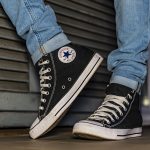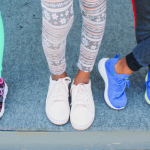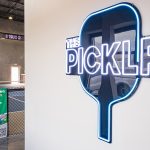Now that the other shoe has dropped in the Footstar bankruptcy case with the company filing motions last week to close at least 165 stores, the conversation has turned from when FTS would file or who would buy it to speculation on who loses and who gains when the new company emerges from Chapter 11 protection.
Last week, FTS asked the Bankruptcy Court for authorization to hold GOB sales and close 77 “under-performing” Footaction locations and all 88 remaining Just for Feet locations. The filing also seem to hint that there may be more closings and/or changes in the future, but this is all weve seen for now.
According to the filing, “the Just for Feet business has been unprofitable since its acquisition in 2000, primarily as a result of its high lease costs.”
We estimate that the retail sales to be about $400 million at retail in 2003 at the 165 stores to be closed, with $300 million at Just for Feet and $100 million at the Footaction stores.
This is about 3% of the annual U.S. athletic footwear volume. We estimate the closings will represent about 5% of the total retail square footage devoted to athletic footwear in the U.S. The Footaction closings account for about 2% of the annual footwear sales done in the mall and represent less than 3% of the total mall square footage. The Just for Feet closings represent about 12% of the annual sales in the branded value channel and about 15% of the square footage.
We expect the GOB sales will commence 4/1, just prior to Easter, which will allow the liquidators an opportunity to maximize their sales. This will have a negative impact on Q2 sales at stores near those that are closing and will likely have some negative carry-over into BTS, as demand is reduced by the clearance sales. The GOB events will likely last about 6-8 weeks and be completed well before the critical BTS season.
Of the 77 Footaction doors, there is a 5% to 10% overlap with their primary mall competitors. Of the Just for Feet closings, there is 10% to 25%, with DSW seeing the most overlap. DSW will likely be the most affected by the GOB events.
The biggest winner here is Footstar. They were in a credit death spiral that paralyzed the company as they frantically attempted to sell off the athletic division. FTS had reportedly bundled both athletic chains together, making the sale difficult. Word on the street was that there were interested parties for the Footaction chain, but that no one wanted the Just for Feet stores.
Now that they have shed the Feet locations — and jettisoned the poor FA doors — they could get a better price for the remaining Footaction doors. They have DIP financing in place that will allow them to run the business as close to normal as possible while they work through the details of the reorganizations.
Ultimately, the next biggest winner is DSW who will ultimately see a major competitor (JFF) eliminated from a quarter of their markets. While there will be some pain during the GOB events, they have clear sailing after that. The other branded Value players, Shoe Carnival and Famous Footwear, should also both benefit from reduced competition. All three will likely seek to expand their chains into the void left by Just for Feet, as many of the locations did a lot of volume and were quite profitable. We dont think any of these three will be interested in the JFF sites, as they are the wrong size for their respective formats.
On the opportunity side at the mall, The Finish Line seems to be the big winner, with about 40 Footaction locations (where FINL does not have stores) that they could consider as potential new stores. FINL surely knows the volume potential of these doors from their due diligence. If they can structure the right kind of lease deal, these stores could make money, giving FINL a nice increase in the number of new stores this year.
Foot Locker overlaps with all but 10 locations, so there is little opportunity for expansion there. The Footaction stores are too small for Champs and probably too big for KFL and LFL. The small number of closings (77) in comparison to the vast 3000+ door Foot Locker empire does not give them much upside.
When looking at business upside, Foot Locker would appear to benefit most from an overlap perspective, but FINL has better marquee product selection in their stores. Nike has been supporting both FINL and Footaction pretty heavily since their relationship with FL faltered in late 2002.
On the vendor side, Nike has the most dollars to lose (we estimate about $100 million wholesale between JFF and Footaction), but as a percentage of their U.S. business, its probably “walkin around money” to them. They can easily make this number up with a small increase from Foot Locker. With the Footaction assortment weighted so heavily to Nike, every one is pretty immune to that lost business. On the JFF side, New Balance has the biggest exposure, probably in the $60 million range.
We probably sound like politicians in an election year as we look at the winners and losers, but the reality is that the opportunities — and impact — will be felt at the local level. We have mapped this out by mall just as each affected vendor and retailer has, looking for the upside for their business. In the end, vendors will be hurt more than retailers as a pretty good chunk of retail real estate leaves the market, but retailers will clearly benefit from the reduced competition and the opportunity to expand their own footprint.
>>> In the big picture of things, these closings hardly represent a significant event to the athletic footwear business in the U.S…













